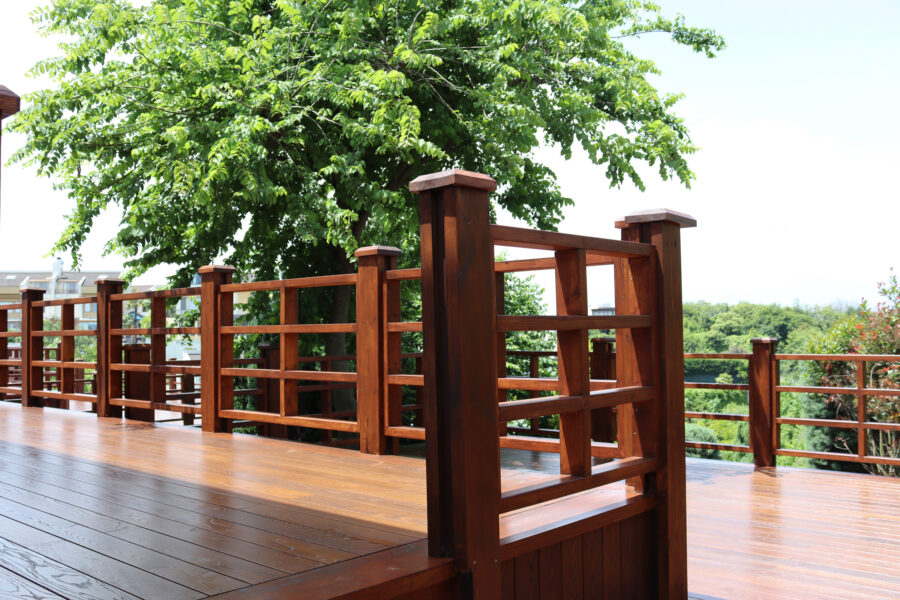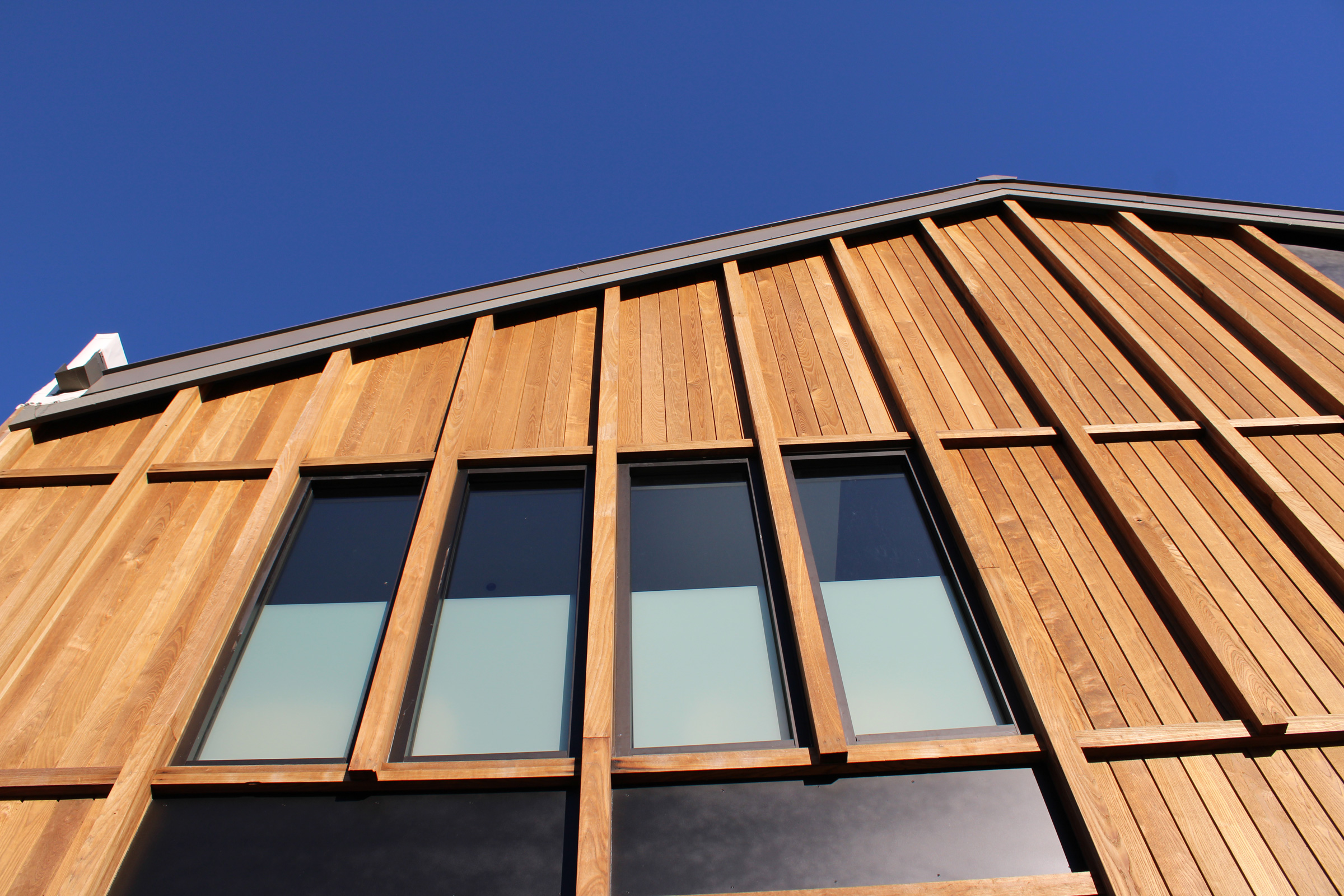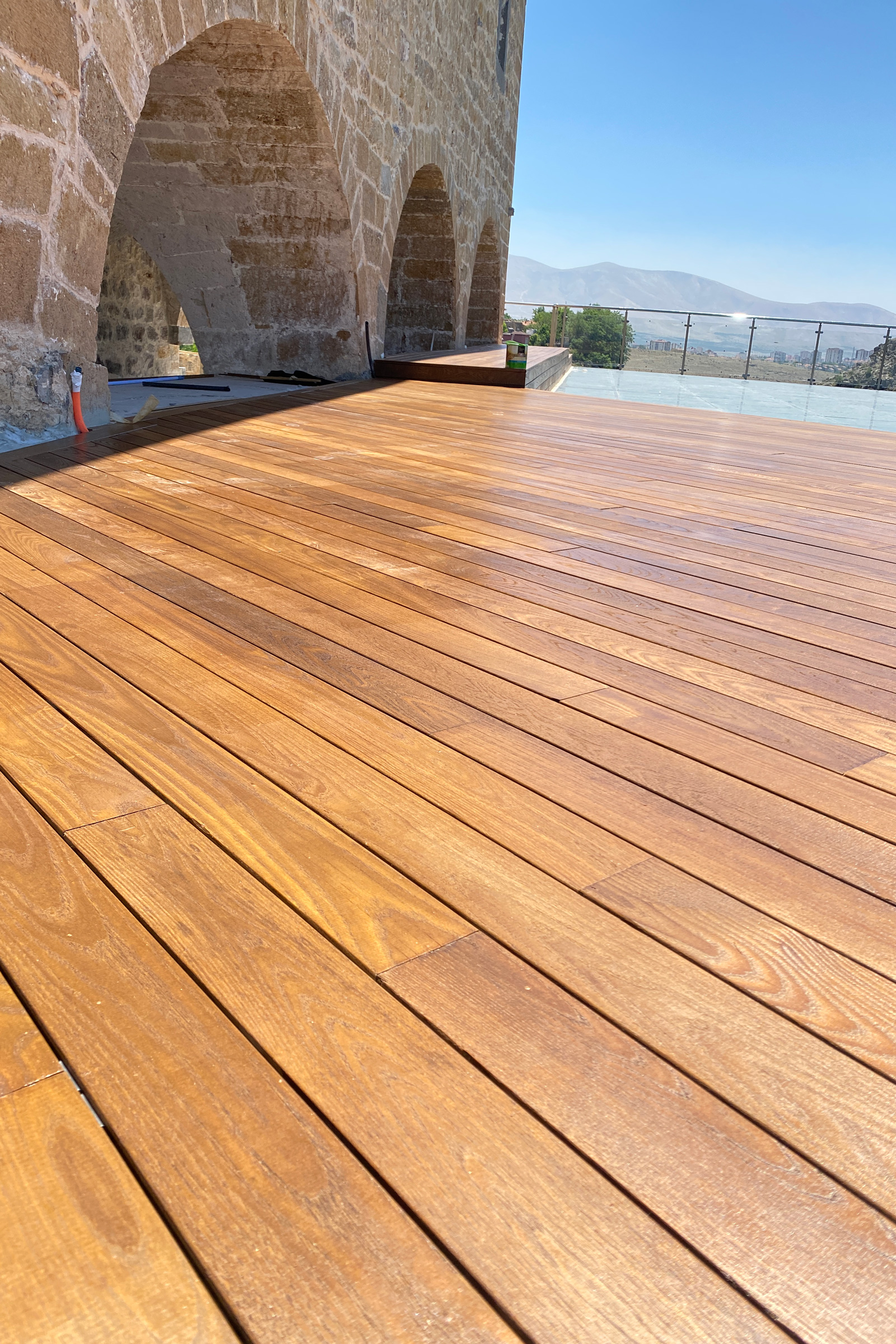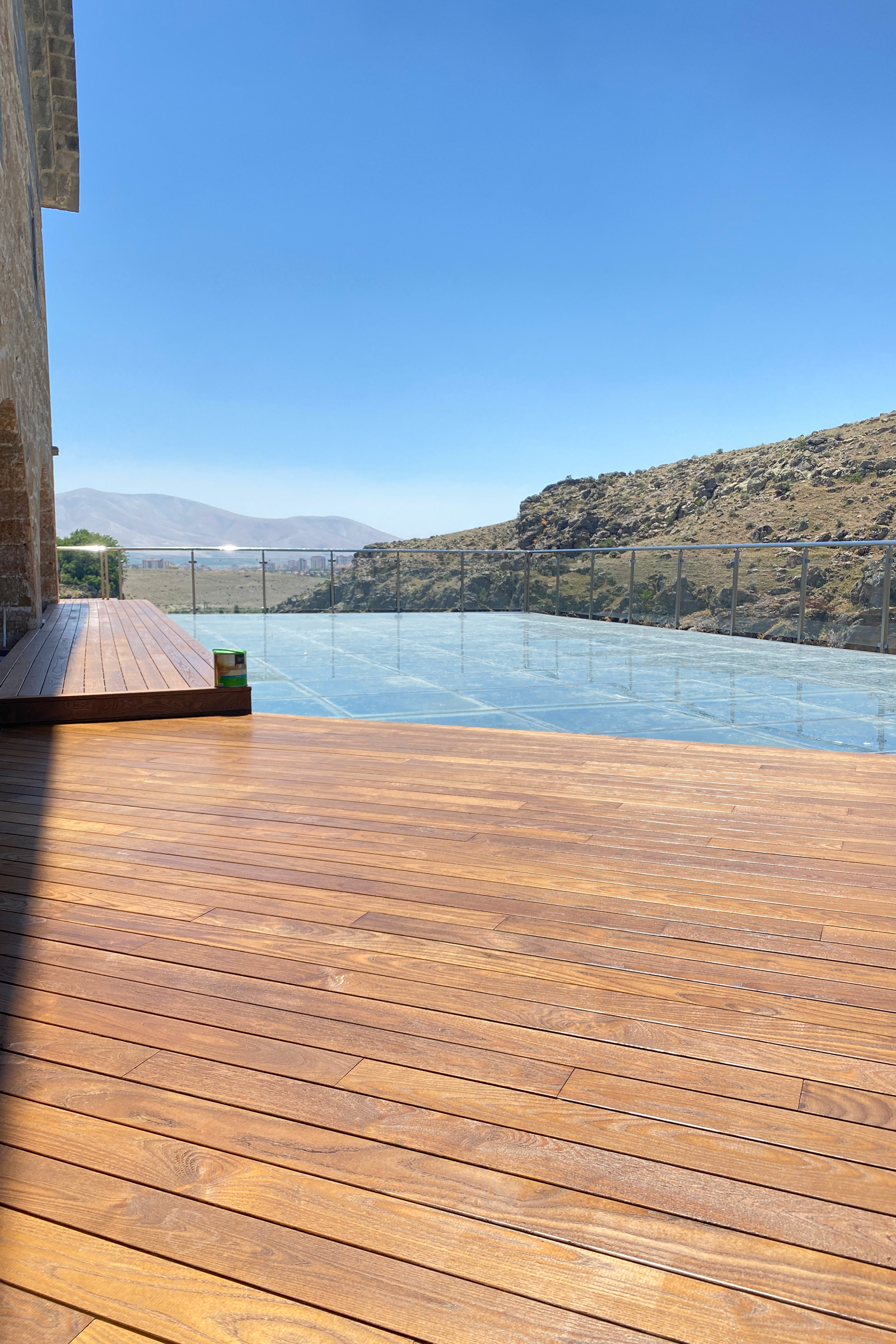Story at a glance:
- Many modified wood products use harsh chemicals that may make them less environmentally friendly.
- ThermoWood is an all-natural thermally modified wood solution created through a patented manufacturing process from the International ThermoWood Association.
- From raw materials to end of life, every part of the ThermoWood life cycle is rooted in sustainability.
When it comes to sustainable building materials, it’s hard to get greener than wood.
The problem is that, although they come from a natural source, many wood products are treated with harsh, sometimes toxic, chemicals that hurt their environmental status.
Specifying the right wood material is essential. That’s where ThermoWood comes in.
ThermoWood is an all-natural, nontoxic, thermally modified wood solution. Unlike most thermally modified wood products, ThermoWood is created through a patented manufacturing process from the International ThermoWood Association (ITWA) that uses a combination of heat and steam.
From raw materials to end of life, every part of the ThermoWood life cycle is rooted in sustainability. Here’s how.
1. Sustainably Sourced Wood

Ash railing and decking. Photo courtesy of Tantimber
“Sustainability and quality are our number one priorities,” says Mehmet Zenginler, cofounder and managing partner of G Wood Pro, the exclusive supplier of Tantimber ThermoWood products in the US. “Our ThermoWood products are made out of FSC- and PEFC-certified timber. They are chemical-free, nontoxic, and eco-friendly.”
Additionally, Tantimber only sources wood from sustainably managed forests across the US, Finland, and Cameroon. “The raw materials that are used to manufacture ThermoWood products are obtained from responsibly managed and sustainable forests only,” he says.
2. Manufacturing Process
- Ash decking. Photo courtesy of Tantimber
- Ash decking. Photo courtesy of Tantimber
There is only one ingredient in ThermoWood—wood. And the patented ITWA manufacturing process that transforms raw wood material into the beautiful ThermoWood finished product keeps it that way.
During the three-phase ThermoWood process, moisture and organic compounds are removed and then cooled using only steam and water. Process gasses released from the manufacturing process are also purified. The end result is a durable and dimensionally stable wood product.
3. Minimal Waste

Pine cladding. Photo courtesy of Tantimber
ThermoWood was designed with reducing waste in mind. For one, ThermoWood products are also 100% recyclable at every point of its life, including the production process.
“Byproducts generated during the production process can be used for energy generation or recycled as raw material for other natural wood products, for example,” Zenginler says.
Additionally, ThermoWood’s siding and decking products have pre-cut tongue-and-groove on the ends of each board, allowing Tantimber ThermoWood products to be fitted easily together with minimal cutting time—and waste—onsite, not to mention a faster install.
“The whole system is designed to minimize waste, save time and money, and provide a safer, sleek, and consistent appearance that will enhance the aesthetics of any project,” Zenginler says.
4. Longevity
“ThermoWood products offer a long service life and do not necessarily require the type of maintenance that comes with other wood products,” Zenginler says.
Due to the durability and strength of ThermoWood, some products, like ash siding, can last upwards of 60 years.
“These factors reduce the environmental impact of ThermoWood during use. With thermally modified wood you can design something that will give you a piece of mind for its use life.”
And if it does need to be removed, ThermoWood is fully recyclable.
“ThermoWood is the industry standard of thermal modification process that guarantees durability, stability, and sustainability,” Zenginler says. “Tantimber ThermoWood products are the best natural wood building solutions that can be used for both exterior and interior applications.”




